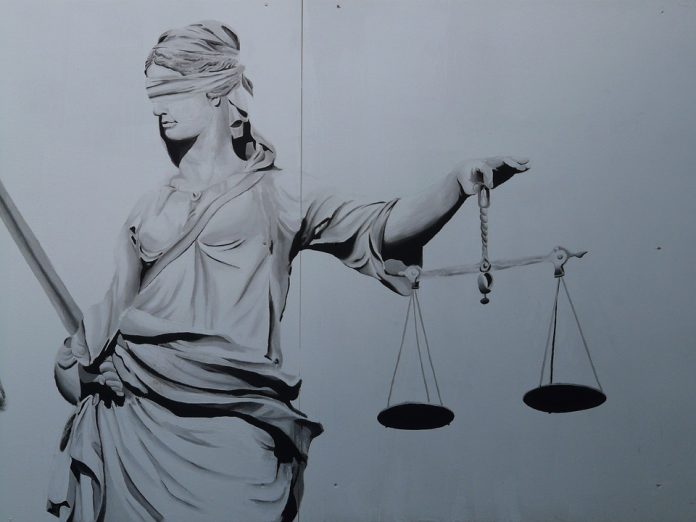This article is written by Jagriti Sanghi, an Advocate practising in the Courts of Telangana and Ross Denny, a final year law student. In this article, she discusses the spookiest criminal cases with elements of witchery, black magic, evil spirits, exorcism, sorcery.
This article has been published by Sneha Mahawar.
Table of Contents
Introduction
India is a country known to uphold its culture, traditions, customs and rituals. But what happens when it comes to an intersection with humanity? Below is a collection of cases that has a certain spooky element to them. Let us see what blind belief, fallacies and superstitions can do to a human’s ability of judgment.
Cases with spooky/scary elements
Sanjay Nagorao Pote v. State of Maharashtra (2018)
In this case, on the 17th of October, 2014, the accused Sanjay Nagarao entered the house where his uncle Ramdas and his children (including the deceased) resided. He then proclaimed that Lord Hanuman had entered into his body and that there was a ghost in the house of Ramdas which had to be removed by him, as asked by Lord, by performing an exorcism.
Following this, Sanjay slapped all the family members, commanded them to take a bath, poured water on his head, and even sprinkled some on all of them. He also operated the water pump in the courtyard and drenched them in water. He then went on to thrust the water pipe into the mouth of Vitthal- the son of Ramdas and the deceased in this case; sat on his chest and proclaimed again that he would remove the ghost from Vitthals’s body which ultimately led to the death of Vitthal. The accused also hit Ramdas with a stone due to which he sustained injuries. As soon as the villagers arrived at the crime scene, the accused announced that no one was to enter the compound as God was inside his body. The post-mortem suggests the cause of death as asphyxia due to aspiration of water and also a homicidal one.
When Ramdas- who was the primary witness was deposed, he stated that the accused had been dancing, chanting the name of Lord Hanuman, and behaving abnormally 10-12 days before the crime; after some time, he would also regain senses and behave normally. The accused, when examined by a doctor, suggested that the abnormality in behaviour could be a result of trauma due to his brother’s death that happened only a couple of weeks before the crime or even schizophrenia.
The trial court had convicted Sanjay on accounts of Section 302 and Section 324 of Indian Penal Code, 1860 (IPC) but when appealed to the High Court of Bombay, the judgment of the trial court was set aside and the accused was acquitted on the grounds of Section 84 of IPC which discusses the act being done by a person of unsound mind is no offence and that there was no evidence on the preparation of crime, no motive, and no mens rea.
Vidya Vinod Dhakate and Others v. State of Maharashtra (2008)
This is another case where superstitious beliefs resulted in an unfortunate death. Here, the deceased is Vinod Dhakate and the accused are his wife Vidya Dhakate and eight others. It was a known fact that the deceased had been mentally unstable for a long time and in pursuit of this, he was alleged to be violent and beat others. So, the primary accused i.e. the wife of the deceased was persuaded by the rest, to bring the victim to the seat of Lord Dattatray which was at the residence of the co-accused to perform pooja and aarti. The accused believed that her husband was possessed by an evil spirit and by doing so, the ghost would leave his body. Thereafter, the victim’s hands and legs were tied to a pole, he was placed in the said area that was an open courtyard, without a shed, in the scorching sun when the temperature was around 40℃. He was not given food or water and this plight of his continued for five consecutive days until he succumbed to death. The autopsy reported the cause of death to be cardiorespiratory arrest secondary to deprivation of food, water, and exposure to high environmental temperature. The skin was said to be dry, wrinkled, and inelastic; stomach and intestine- empty; and all vital organs shrunk and pale.
There were 17 prosecution witnesses out of which 4 had turned hostile. According to the witnesses, there was crying for food and water, and a few neighbours even came to offer water to the deceased but were stopped by the accused. On the morning of the day that the victim died, one of them even lodged a written report in the police station but no action was taken. Another witness stated that the house of the co-accused was often used to treat cases of possession of ghosts by pooja, aarti, black magic, etc.
Further, the accused went for an appeal to the Bombay High Court. It was held that the question of whether the death of the victim was homicidal, was not paid attention to by the trial court. Although the accused lacked intention, there was knowledge of a likely death under the hostile conditions. Thereby, the omission to care does amount to homicidal death. The next question to be answered was whether this amounted to murder? The Court’s answer was a no because of the fact that the deceased was alive 5 days prior; one could not infer that he would die. Thereby, the accused were convicted under Section 304 and Section 342 of IPC.
Additionally, the accused went for an appeal to the Supreme Court who set aside the conviction under Section 304 part II and said the accused be held punishable only under Section 304 A of IPC and the sentence for imprisonment be only for the period already undergone.
The State of Maharashtra v. Dyaneshwar Haribhau Kulal (2008)
This is a case of a merciless homicide wherein the accused, on accounts that the victim had, by means of black magic, killed his father in the year 1972, went on to murder the victim. According to the statements of a number of witnesses, there had been arguments between the accused and the victim, and the victim even agreed to conduct a Jatra ceremony to neutralize the effects of the black magic. However, the accused went on to threaten to kill the victim on the morning of the day he committed the crime. It was also inferred that a skull and other articles were lying around the field where the body was recovered; the head of the deceased was completely severed from the body and was held by the hair and flashed to a witness in this case who was threatened to have the same fate if he were to complain about the incident. It is also known that the accused had his sickle sharpened five days before the murder; he also used the sickle to behead a she-goat; he was absconding after committing the crime and was also on bail for another murder case.
The post-mortem suggests that the injuries sustained on the victim’s body were inflicted by the sickle recovered. Further, the Court held that it is evidently a clear case of pre-mediated, calculated, cold-blooded murder. The trial court convicted him of the death penalty under Section 302 of IPC. The accused then appealed to the Bombay High Court who upheld the judgment of the trial court.
Jitu Murmu v. State of Odisha (2020)
This is yet another case that involves superstitions. The deceased in this case- Sambari Murmu had gone to her maternal uncle- Rame Murmu’s residence who was locally known to be a self-studied supernatural medicine expert. On account of unwellness, she wished to receive indigenous treatment. On the pretext of this, Rame Murmu and his family tied the victim’s legs and hands and assaulted her with a Trishul/Trident, rope, and iron rod. This resulted in gruesome injuries and ultimately the death of the victim. The accused and his family had performed an exorcism on the victim on the belief that she was possessed with an evil spirit that had resulted in her abnormal behaviour. As she started to shout, they believed that she was possessed by an evil spirit. And in order to retrieve the remnants of the “evil spirit” from her body, the accused had done the said act. Each of the accused has also admitted to practising such techniques with another woman of the same village.
The autopsy reveals that the victim had been inflicted with penetrative injuries even in her chest wall and lungs. And that the said injuries were caused by Trident, Gainthi, and Sabala. The accused were convicted under Sections 34, 302, 307, 323, 324, 325, 326, 342, of IPC and Sections 5 & 6 of the Odisha Prevention of Witch-Hunting Act, 2013.
Ram Swaroop v. State (2019)
Vimla, the deceased in this case, was married to the son of the accused- Ram Swaroop. After four days of the said marriage, the victim contacted her family on account of being assaulted by her father-in-law on the pretext that she was afflicted by ghosts. When her father and brother intervened, the accused told them not to interfere and that he will relieve her of the evil spirits completely. The incident happened once more and the same reply was given by the accused.
On the day of the murder, while the victim was eating with her family, the accused comes in and hits her with an iron rod. He was also heard telling the witnesses to keep away or the spirits might afflict them too. The accused had created a situation of terror to the extent that none of the witnesses reported the incident. The deceased was cremated the very next day without performing an autopsy. After a few days, it was the victim’s brother that mustered the courage to report the incident and thereby led to the arrest of the accused. Additionally, he also submitted CDs and photos as evidence of assault on the deceased. The accused was convicted under Section 302 of IPC. Further, on appeal, the High Court of Rajasthan sided with the appellant’s counsel who stated that it was to be considered as an act of ignorance and that it was a usual practice in the village by Bhopal and Tantriks to repel evil spirit and even occasionally indulge in the beating because they’re convinced that doing so will alleviate the symptoms. One fact that the victim or her parents did not disclose is that she suffered from seizures or fits. Therefore, the accused considered seizures as a sign of evil spirit and due to illiteracy had committed the crime. Further, the High Court also toned down the grounds of conviction to Section 304 Part II of IPC and reduced the period of sentence to the one already undergone by the accused and thereby officiated his release.
Lachhman Dass Alias Lakha v. State Of Himachal Pradesh (2008)
The accused in this case had come in contact with the victim on a bus ride and he claimed to be a sorcerer as well as a tantric. The victim- Lata Devi was at her parent’s home for the festivities of Navaratri and subsequently had contacted the accused for performing Puja. However, the accused did not leave even after Dussehra. One night, the accused pointed to a mark he made in the backyard and asked the victim’s father to dig so as to find idols of deities. However, only a stone was found and it was taken by the accused to the puja room of the house. A day after this incident, the deceased started behaving abnormally; she began scratching her head rigorously and hit her hands and wrists on the ground. The accused on seeing this told her family members that she is possessed by an evil spirit and that because he knew exorcism, he could retrieve the evil spirit from it if he were given the whole night. He then took her to the pooja room and beat her with tongs and a chain and told the others that if they were to interfere, they would be afflicted with the evil spirit as well. The next day, the victim seemed silent and emotionless only to go back to being abnormal at night. The accused again took her to the puja room on the pretext of retrieving the remnants of the evil spirit from her body. The next day, the deceased laid in the puja room, motionless, and was subsequently taken to the hospital where she was declared brought dead. The accused went to the extent of again stating that he would revive her with his powers.
The post-mortem suggested that there were abrasions and contusions on the body, blood-tinged froth in the nose and mouth and that the death was caused due to vasovagal shock due to repeated hitting of the victim with the tongs. The tongs and chains were retrieved from the crime scene where the accused was present.
The Court held that due to the absence of intention, it is a case of culpable homicide not amounting to murder and convicted the accused under Section 304 Part II of IPC.
Measures to curb such inhumane practises
- Mental change is the requirement to remove such dehumanising superstitious practices.
- People in rural areas, as well as urban areas, have to be made aware of the ethics of such brutal practices and be made aware by sensitization campaigns on the same.
- India needs specific legislation as the Indian Penal Code is not sufficient to tackle crimes on account of black magic and superstitions.
- A central legislation is the need of the hour that takes into account the victim’s mental state.
- Reasons for failure of implementation of state laws should be examined to understand the ground realities.
Conclusion
Indian case records have a large number of cases with the spooky elements of witchery, black magic, evil spirits, exorcism, sorcery, etc. As the number of cases are not small, India has regulations to curb these unethical practices too. The reason for these many cases is blind faith and superstition. This blind faith clouds people’s judgment and thereby instigates them to commit such inhumane crimes. Another reasoning would be illiteracy. There are a number of cases that go unreported too. Although wiping out unethical age-old rituals and practices is a difficult task, it is very much a necessity too. Otherwise, innocent people will have to suffer the plight. Moreover, a well-established mechanism for the implementation of the existing laws, and the creation of new ones is of utmost importance.
References
- https://theprint.in/opinion/state-anti-superstition-laws-not-enough-india-needs-a-central-law-focus-on-victim-not-crime/563439/
- https://www.downtoearth.org.in/news/whole-of-india-needs-antisuperstition-law–41977
- https://www.thehindu.com/opinion/op-ed/do-we-need-an-anti-superstition-law/article20724256.ece
Students of Lawsikho courses regularly produce writing assignments and work on practical exercises as a part of their coursework and develop themselves in real-life practical skills.
LawSikho has created a telegram group for exchanging legal knowledge, referrals, and various opportunities. You can click on this link and join:
Follow us on Instagram and subscribe to our YouTube channel for more amazing legal content.
 Serato DJ Crack 2025Serato DJ PRO Crack
Serato DJ Crack 2025Serato DJ PRO Crack











 Allow notifications
Allow notifications



